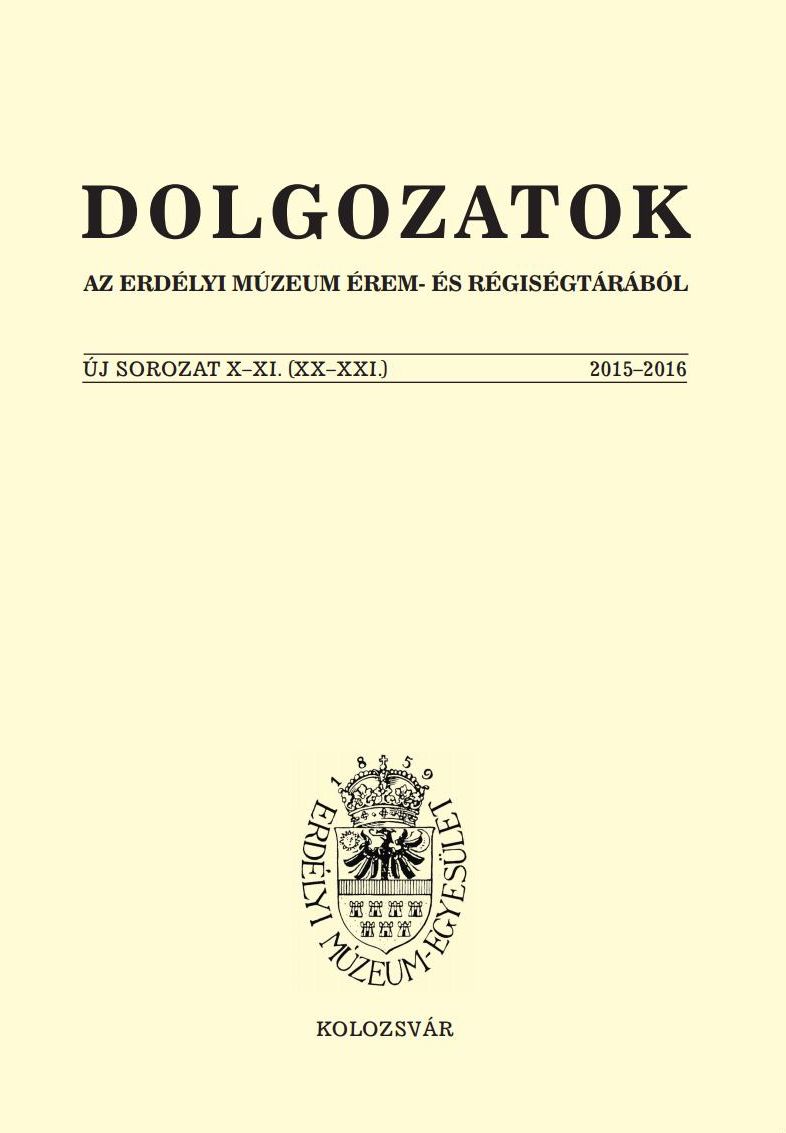Az oguz és a besenyő történelem sarokpontjai a 8–9. században
The keystones of Oghuz and Pecheneg history in the 8–9th century
Author(s): Attila Katona-KissSubject(s): Archaeology
Published by: Erdélyi Múzeum-Egyesület
Keywords: Inner Asia; oghuz tribes; pechenegs; migration; Volgha region
Summary/Abstract: With the collapse of the Türk Khaganate II a new geopolitical situation has formed in the Eurasian region formerly controlled by the empire: east of the Altay the Uyghurs took on the Türk legacy and consolidated their power, while in the west new nomadic tribes were establishing their power on the ruins of the former Western Türk Empire. The Uyghur Khaganate, as a major power in the Central Asian region strove to integrate the nations that just got rid of the Türk yoke into the frame of the new state, but their efforts were abandoned after 750, when they turned their attention to the weakened Chinese Empire, also abandoning the control over the region west from the Altay. The Kharluks, refusing the Uyghur hegemony, began to infiltrate into the Türghes areas immediately after the fall of the Türks, and after the end of the Uyghur expansionist tendency they started to coerce the Türghes into submission and reorganized the western Türk state. Similar to the Türk era, at the time of the Uyghurs the territories to the north of the central areas were considered peripheral regions. Northwest from the Altay, in the middle Irtysh region lay the dwelling place of the Kimek tribal confederation and since the region was exempt from the Uyghur expansion towards the west, their situation had stabilized, then strengthened. Their tribes had become adjacent with the Kharluks and Uyghurs in the northeast zone of the Balkhas Lake and the Tarbagatai region by the second half of the 8th century, while their west wing, the Kipchaks reached the southern slopes of the Ural Mountains by the beginning of the 9th century. The Oghuzes and Pechenegs, becoming independent from the Uyghur control, wandered to territories further to the west from the Kharluks and Kimeks. By the end of 740 the Oghuzes had already confronted their former chief-tribe. Their battles are reported by the Uyghur records, although more sporadically than the Türk inscriptions. Around 780 the Muslim sources mention them in the area of Syr Darya. Although, according to the historical tradition, the Oghuzes lived in the region of Issiq Köl from where they might have been expelled by the Kharluks arriving in the Seven River region, our sources show a different picture of the territory of the Oghuz dwelling and the routes of their migration. Their starting point was clearly the territory of today’s Mongolia, from where their migration went on after the Kharluk secession. Since we have no information about wars between Oghuzes and Kharluks, it is quite likely that they might have arrived in the region of the Aral Lake through Jungaria, the steppes north to the Lake Balkhash. It is possible that their migration touched the settlement of the Pechenegs in the middle of the 8th century, who then lived in the upper reaches of the Irtysh region, but this argument is only a hypothesis. But it is a fact on the other hand that either the expansion of the Uyghurs or the waves of Oghuzes fleeing from the Uyghurs displaced the Pechenegs. Muslim sources mention the Oghuz again in 820/821 then in 844 in the Khorasan province frontiers. On the other hand, we have information about the Pecheneg territory only in the last two decades of the 9th century, when their tribes were living in the Volga–Ural region. It is possible that the borders of the Oghuzes and Kimek-Kipchaks was not closed and it might have expanded beyond the Emba, but the tribal area must have been in the northern Caspian region. This is where the Oghuzes attacked their displaced tribes around 893–894. In 893 a Samanid campaign broke the Kharluk hegemony in the region of Central Asia. The Kharluk were pushed back into the eastern part of Seven River Valley and the Oghuzes, taking the advantage of the disturbed balance of power, attacked the Pechenegs. Thus the Oghuz yabghu state had become a new major power in this region, bordered to the west by the river Volga, until the fall of the Khazar Khaganate (965). The Pechenegs – ousting the Hungarians – occupied the southern Russian steppe for a century. We have the opinion that most of the supposed wars between the Oghuzes and the Pechenegs cannot be proved with adequate certainty. Perhaps the Oghuzes might have had a role in making the Pechenegs leave their settlements in the Upper Irtysh area in the middle of the 8th century. However, we do not have any data of battles between the Oghuzes and Pechenegs neither in the first half nor in the middle of the 9th century. These hypothetical conflicts resulted from the inaccurate geographical localization and interpretation of certain sources. On the other hand, the Oghuz occupation of the Volga–Ural area, inhabited by the Pechenegs, is recorded and dated to 893–894. It is unlikely, however, that the Oghuz offensive against the Pechenegs was carried out in alliance with the Khazars – the Khazars probably played only a passive participant role in the birth of Oghuz great power.
Journal: Dolgozatok az Erdélyi Múzeum Érem- és Régiségtárából. Új sorozat
- Issue Year: 2016
- Issue No: X-XI
- Page Range: 73-99
- Page Count: 27
- Language: Hungarian

